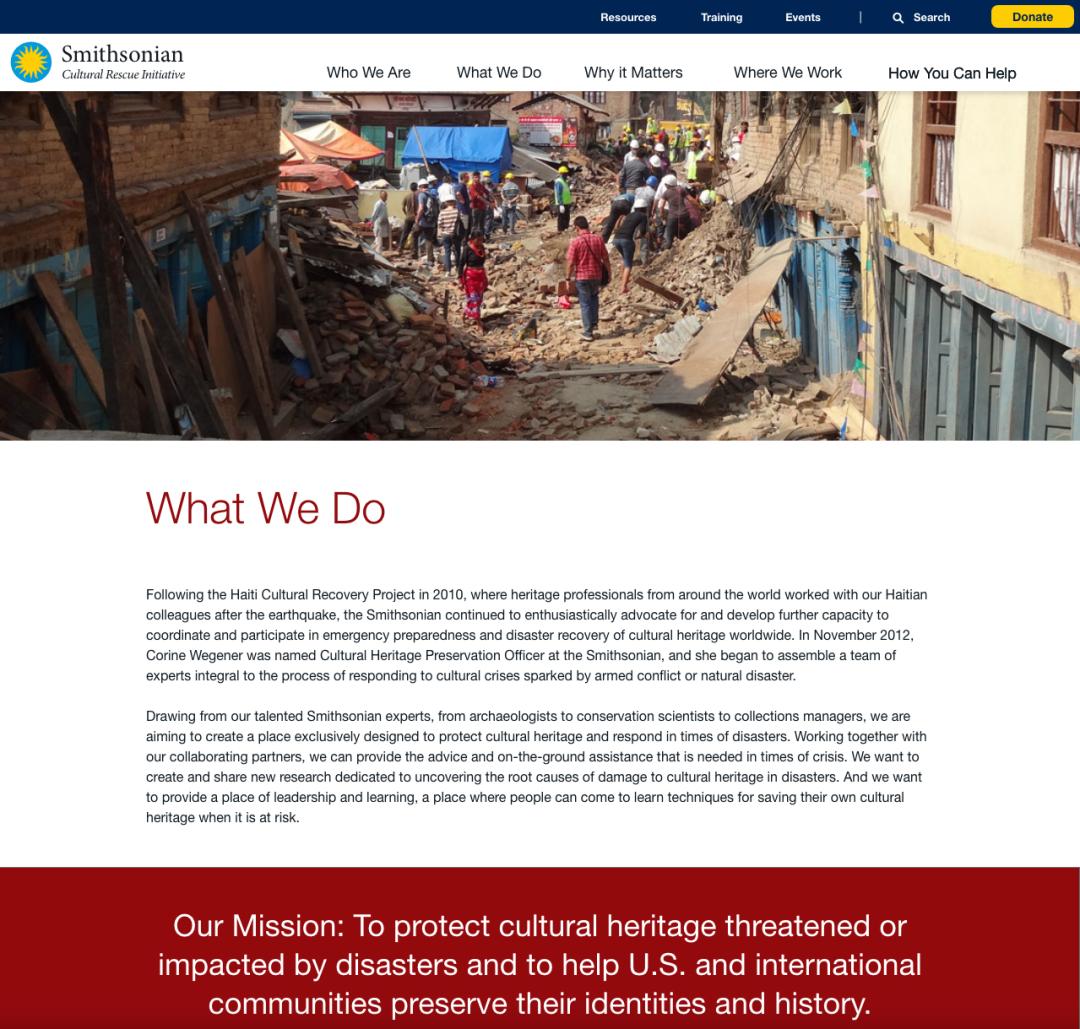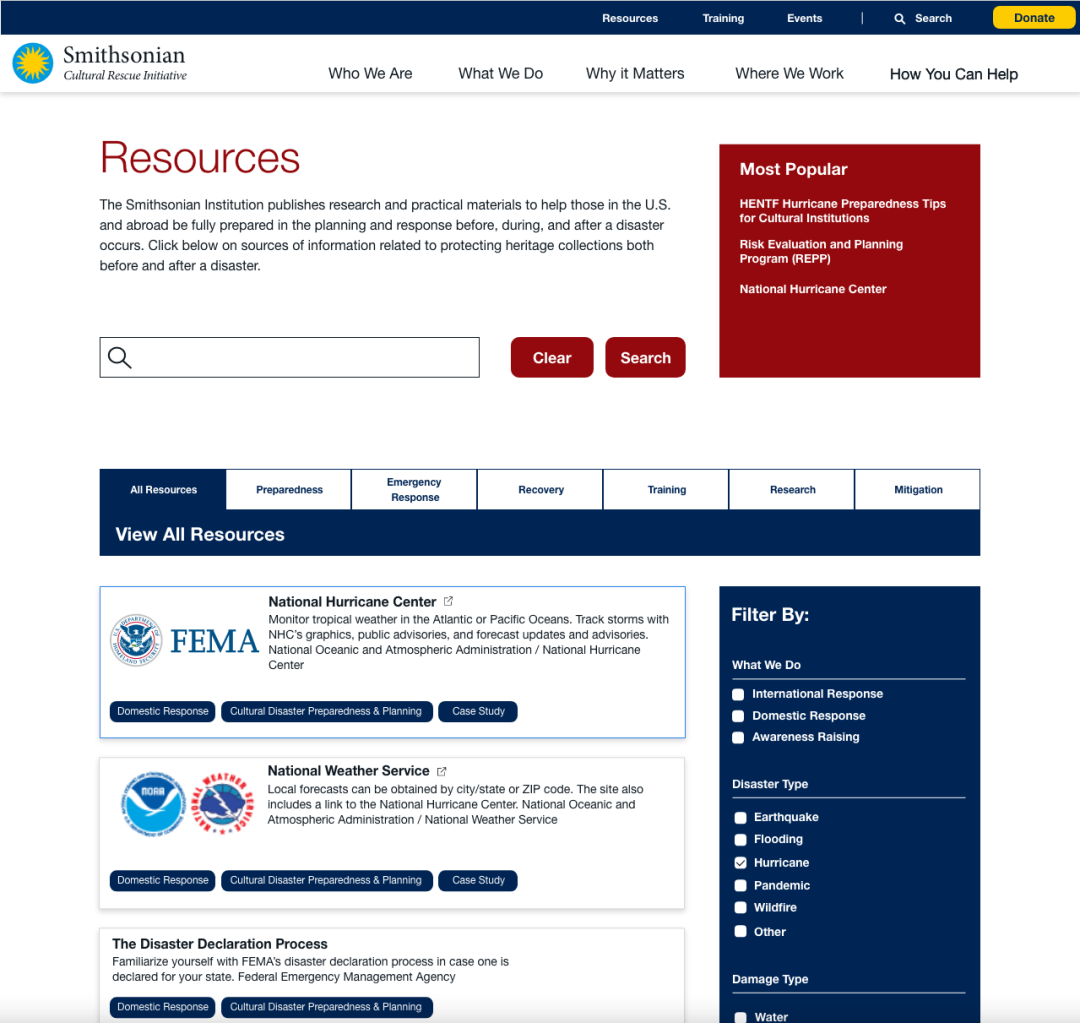Cultural Rescue Initiative Website
Overview
The leadership at the Smithsonian Cultural Heritage Preservation partnered with Interactive Knowledge to update its flagstone project’s website, Cultural Rescue Initiative (SCRI) which was old, unresponsive, and did not meet current ADA standards. The resource-heavy website was loaded with critical information for cultural heritage preservation during conflict or natural disasters, but users found it disorganized and unintuitive for navigation. After a thorough Discovery Phase, the Interactive Knowledge team identified and prioritized the project goals, developed a full content strategy, and implemented a new site in under 1 year.
The goals
Drawing from our talented Smithsonian experts, from archaeologists to conservation scientists to collections managers, the SCRI team aimed to create a place exclusively designed to protect cultural heritage and respond in times of disaster. Working together with collaborating partners, they provide the advice and on-the-ground assistance that is needed in times of crisis. The goals of the site were to share new research dedicated to uncovering the root causes of damage to cultural heritage in disasters, provide a place of leadership and training, create a place where people can come to learn techniques for saving their cultural heritage when it is at risk and find a single site of resources for cultural preservation.
The IK approach
The Smithsonian Institution publishes research and practical materials to help those in the U.S. and abroad be fully prepared in the planning and response before, during, and after a disaster occurs. The existing SCRI site contained a wealth of information that was disorganized and difficult to find. Interactive Knowledge began this project with a comprehensive Discovery Phase to find the pain points of the user experience, the wishes of the staff and stakeholders, and closely examine the site’s analytics. From this Discovery Phase, we identified the project goals and the measures we would take to reach those goals. These goals ultimately dictated the site’s new content strategy and specific site functionality.
The first finding to come out of the Discovery process was the ambiguity of who SCRI was, and what they did. Visitors to the site needed clarification as to the function this Smithsonian unit performed, and their importance to the global community, even from other Smithsonian employees. To combat this approach, we broke down the primary navigation to address these shortcomings. Who We Are, What We Do, Why It Matters, and Where We Work dictate the overall structure of the site. Content is then organized under these headings that make the role of the Cultural Rescue Initiative crystal clear.

When we identified the audiences for this site, it became clear that users were not the typical website user. The majority of visitors to the SCRI site were usually under duress of impending or current conflict or disaster. A detailed taxonomy strategy helps to keep resources intuitively organized, searchable, and filterable by disaster type. Easy-to-find categories and agency logos help users recall sometimes complex government agencies. Curated lists of the most popular content keep the resources section timely and topical to the world’s current situation.

The results
The Smithsonian Cultural Rescue Initiative website redesign focused heavily on user experience improvements. Decisions were made from a detailed Discovery process and the content strategy was developed from the collaborative goals of Interactive Knowledge and SCRI devised from the beginning.
Features included:
- Improved Content Strategy with a detailed taxonomy system for visitor resources
- A robust search engine that allows users to filter by pre-curated categories like disaster type
- Enhanced accessibility information for visitors
- Training schedules and workshops
- Case studies of cultural preservation successes
The new website plans to launch in the fall of 2023.